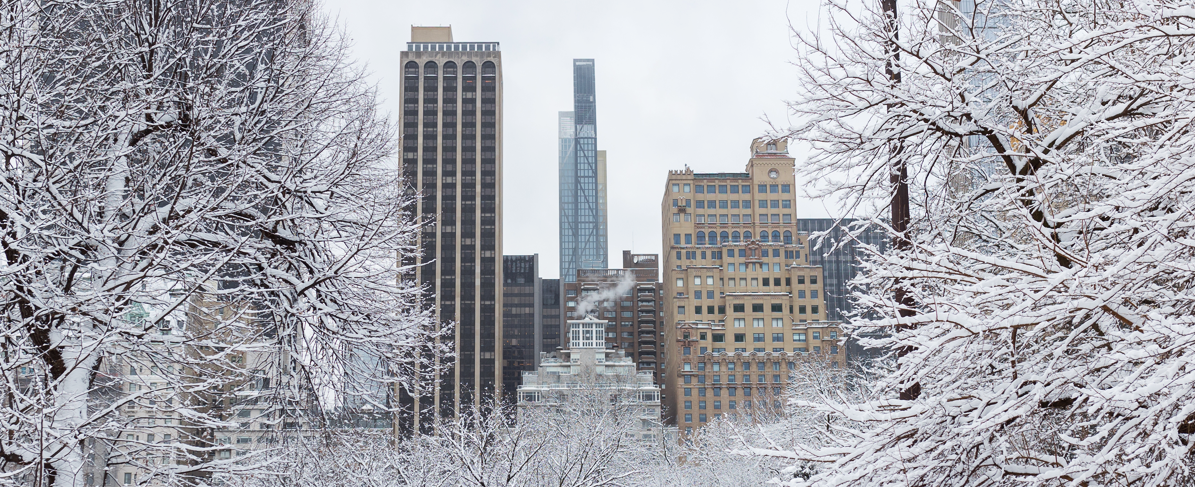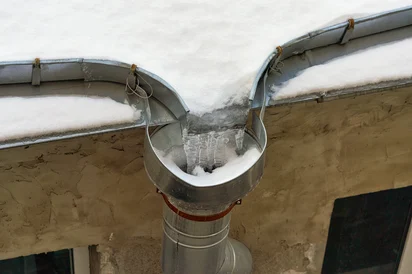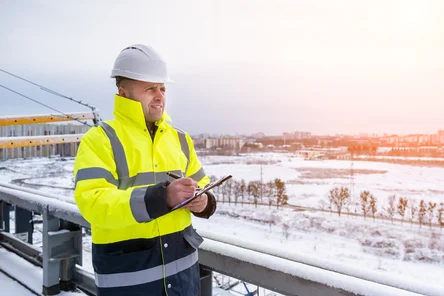Winterizing Commercial Buildings: Maintenance for Cold Temperatures
Winter weather makes buildings more vulnerable to failure, so use these preventative maintenance tips to get ahead of costly waterproofing challenges.

Winter weather makes buildings more vulnerable to failure, so use these preventative maintenance tips to get ahead of costly waterproofing challenges.

While ongoing maintenance is important year-round for air- and watertightness, winter weather makes buildings even more vulnerable to envelope failure. Rain and snow can enter small crevices and once the water freezes, the resulting expansion can crack or tear the surrounding material, causing exponential damage as larger voids enable additional moisture ingress.
For owners and facility managers of commercial buildings, dropping temperatures should be an alert to get ahead of these costly waterproofing and structural challenges. In this blog post, we will review the preventative maintenance steps to take before or during the winter months to protect your structure from expensive and potentially dangerous issues.
 There are countless locations on a structure where moisture can infiltrate and be subject to the effects of freeze thaw cycling. From the exterior wall and roof, to sealant joints, waterproofing coatings, and masonry. When liquid or airborne moisture gets into any void on the building envelope and freezes, it expands, increasing the size of the void. As this process repeats throughout the winter, sometimes even within the same day, the larger the void becomes and the costlier the repair.
There are countless locations on a structure where moisture can infiltrate and be subject to the effects of freeze thaw cycling. From the exterior wall and roof, to sealant joints, waterproofing coatings, and masonry. When liquid or airborne moisture gets into any void on the building envelope and freezes, it expands, increasing the size of the void. As this process repeats throughout the winter, sometimes even within the same day, the larger the void becomes and the costlier the repair.
If a drain is left clogged during the winter season, snow and ice can accumulate, adding significant weight. This weight can cause structural damage, or worst-case scenario, a roof collapse.
For traffic-bearing surfaces, de-icing salts from automobiles can be damaging to the waterproofing membrane and the substrate it protects. While some coating technologies are made to be chemical resistant, not all of them are. It is important to understand the products used on and around your property to know their limitations.
Freezing temperatures can exacerbate existing issues on a building. If you catch a problem early enough, however, you can either address it fully before the cold hits or alternatively, apply a temporary fix to buy some time until you have the necessary resources or suitable weather for a complete long-term solution.
Additionally, a continuous building envelope and proper insulation is a must to maintain occupant comfort. Gaps in the exterior wall, or façade, and around window and door openings hinder energy-efficiency and waste money allocated towards heating the building. Properly sealing these areas will help to maintain consistently comfortable interior temperatures and save money on HVAC costs.
It is best practice for overall building maintenance to thoroughly review the property at least four times a year, ideally between each season. Before and after winter are the most critical as they often see the most drastic temperature changes.
Therefore, the first step to preparing your building for cold weather is to take a field walk, simply conducting an audit of the structure and taking photos of any concern areas. Here are the five main sections to keep an eye out for:
 Drains
DrainsAs noted some building concerns can be addressed in the moment, but others can have a temporary remediation if cost, labor, or time are lacking. Not all restoration products can be applied in cold temperatures so always check the manufacturer’s application instructions for proper installation conditions.
Once you’ve reviewed the structure, noted any concern areas, and photographed them, begin to plan for proper comprehensive maintenance once the weather lifts. Be sure to revisit those key sections and compare them to the photographs to determine any changes. Don’t wait to walk your building or else you may be faced with even more costly waterproofing challenges in the spring that you have not budgeted for.